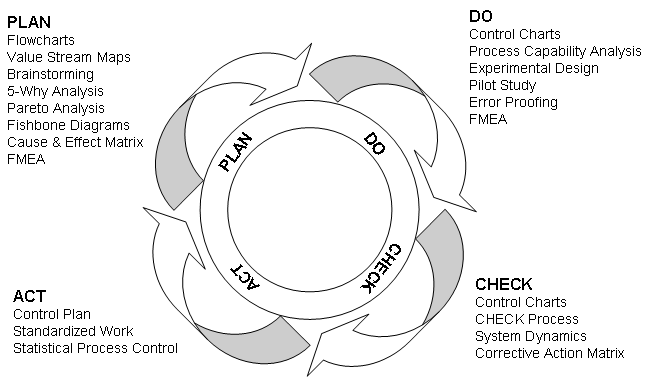Definition
PDCA is an acronym for Plan-Do-Check-Act, the continuous improvement process prescribed by Walter Shewhart. Dr. Deming helped to popularize this model, as well as proposed his own improvement cycle, Plan-Do-Study-Act, which circles back again to the plan phase in a continuous loop. The underlying theory maintains that comparing the actual results of an action with the target or expected goal and adopting corrective actions if the disparity is large, is a more effective strategy than focusing inordinately on developing a flawless plan. PDCA delivers incremental improvements in an upward spiral.
Application
The PDCA cycle provides a continuous feedback loop to effectuate continuous improvement efforts. The four steps involved are described below:
• PLAN: Identify through analysis the problem to be solved or change to be implemented. Determine what needs to be done and in what order.
• DO: Develop and implement the solutions (start with a pilot).
• CHECK/STUDY: Gather and analyze the data to evaluate performance and report the results.
• ACT: Use the conclusions from the last step to decide if the solution could be further improved. If deemed effective, standardize the solution to incorporate it into routine activity and start planning for the next improvement opportunity (on this or another process).
Notes

The adjoining graphic illustrates some of the Six Sigma DMAIC tools that can be used at different phases of the PDCA cycle.
External Links
PDCA Overview - American Society for Quality (ASQ) - http://asq.org/learn-about-quality/project-planning-tools/overview/pdca-cycle.html
